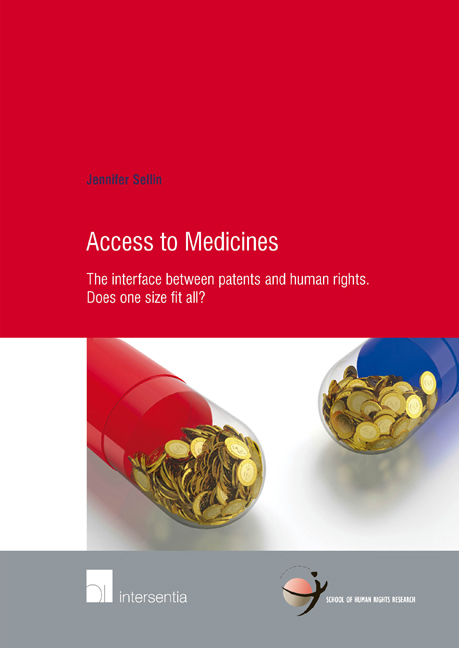Book contents
- Frontmatter
- Dedication
- Acknowledgements
- Contents
- List of Abbreviations
- Part I Method and Problem Statement
- Part II International Framework
- Chapter 3 A Human Right of Access to Medicines?
- Chapter 4 The TRIPS Agreement: Patent Protection for Pharmaceuticals
- Chapter 5 The Interface between Patents and Human Rights in the Context of Access to Medicines
- Part III Country Studies
- Bibliography
- Curriculum Vitae
- Miscellaneous Endmatter
Chapter 3 - A Human Right of Access to Medicines?
from Part II - International Framework
Published online by Cambridge University Press: 22 November 2017
- Frontmatter
- Dedication
- Acknowledgements
- Contents
- List of Abbreviations
- Part I Method and Problem Statement
- Part II International Framework
- Chapter 3 A Human Right of Access to Medicines?
- Chapter 4 The TRIPS Agreement: Patent Protection for Pharmaceuticals
- Chapter 5 The Interface between Patents and Human Rights in the Context of Access to Medicines
- Part III Country Studies
- Bibliography
- Curriculum Vitae
- Miscellaneous Endmatter
Summary
INTRODUCTION
During the last decade, there has been much debate both within the international and domestic context on the issue of patients’ access, or lack thereof, to essential medicines. This issue has been especially relevant for developing countries, where pandemics like HIV/AIDS have taken hold, with devastating results for their populations, and who are in dire need of good quality medication. Within the human rights field it is often argued that patients have a right of access to essential medicines. Although such a right of access to medicines is not explicitly mentioned in any of the international or regional human rights treaties, it is deduced from the codified human right to health. Moreover, accessibility of medicines is argued to include affordability of medicines. As was shown in chapter 2, in developing countries, which are the focus of this research, high medicine prices curtail patients’ access to essential medicines. In part, these high, and as such possibly unaffordable, medicine prices are ascribed to the 20-year monopoly enjoyed by pharmaceutical corporations patenting new medicines. This link between the patent protection of medicines and patients’ access to such medicines became a topic of much debate and research, particularly after the negotiation and entry into force of the Agreement on Trade-related aspects of Intellectual Property Rights as an annex to the Agreement establishing the World Trade Organisation. Namely, the TRIPS Agreement provides for minimum standards of intellectual property rights, including patents. Not only activists, but also international organisations started to further examine the link between patients’ (lack of) access to medicines as a human rights issue with regard to the minimum patent standards as required by TRIPS.
Before being able to examine the legal relationship between patents and patients’ possible right of access to medicines, the latter issue must first be situated within the broader context of international human rights protection.
- Type
- Chapter
- Information
- Access to MedicinesThe Interface between Patents and Human Rights. Does one size fit all?, pp. 65 - 142Publisher: IntersentiaPrint publication year: 2014



